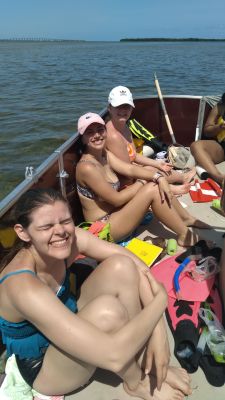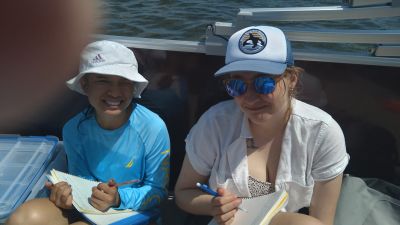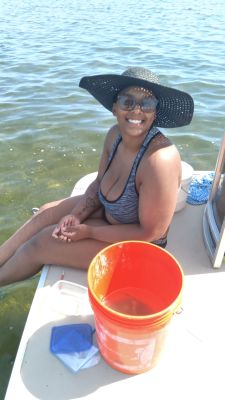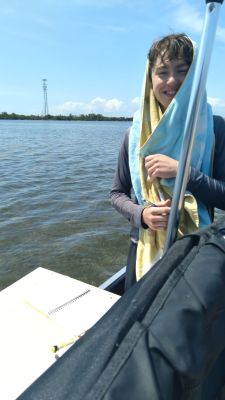Our Tuesday started with a lecture on positive interactions between marine organisms, and taxonomy lectures on Phylum Mollusca (chitons, mussels, oysters, snails, octopus, squid, etc.) and Phylum Cnidaria (jellyfish, coral, sea anemones, etc.). The water was a bit choppy so we took a longer break for lunch and began our adventures in the afternoon.
Once on the boat, we headed to the Bight. First we stopped near the edge where the red mangroves (Rhizophora mangle) grow, where two groups began collecting data for their research projects. One group used GoPros to take videos of fish that gathered beneath the R. mangle roots and then counted the number of fish that were present. They also gathered data on seagrass density at the roots in order to see if there is any correlation between the number of fish present and the proximity of seagrass. The other group also looked at R. mangle roots but instead were counting the different species present, specifically sponges, mussels, and red and green algae. As this was the first day of data collection for the projects, there were parts of the methods that had to be worked out in the field. Once the methods were figured out and some data were collected, we moved into the center of the Bight to collect data for two other student’s research projects. One group set an area with a diameter of 7 meters and counted the number of sponges within the area. They then measured the depth of sediment where those sponges were located as well as the height of the sponge. The other group looked at species of macroalgae within the grass beds. While collecting data, our first sea turtle swam up and caused lots of excitement. We also collected many gastropod species. Once our data were collected, we returned to our home base. We enjoyed pasta carbonara for dinner and finished the evening off with lively conversations on our front porches, enjoying the sunset and relaxing after a very busy day.
Zoe Longacre, ’25








